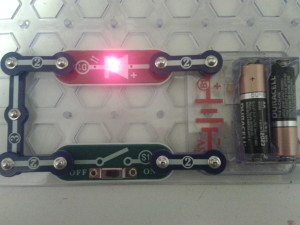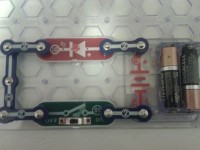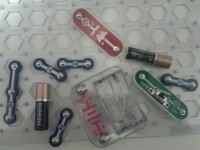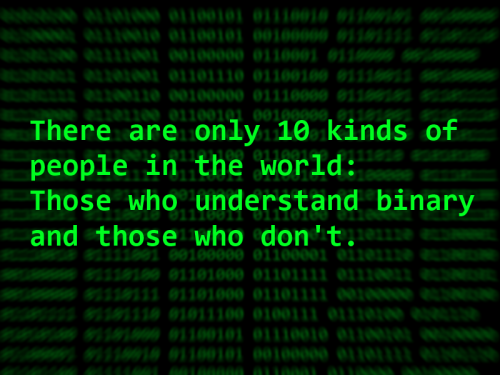Some links may be affiliate links. I may earn money if you buy something or take an action after clicking one of these links on this site.
Rob Knowlan is a participant in the Amazon Services LLC Associates Program, an affiliate advertising program designed to provide a means for sites to earn advertising fees by advertising and linking to Amazon.com. As an Amazon Associate, I earn from qualifying purchases.
Binary Options
Okay, so it’s a geek joke that scientists, mathematicians and computer nerds will chuckle at readily. What does it mean to the uninformed?
The best way to spoil a joke is to explain it
That may well be the case, but if you’re one of the people who doesn’t understand binary, the joke is this. Binary is a system of numbering in which there are only two numbers: 0 and 1. As such, zero is 0, one is 1, two is 10, three is 11, four is 100 and so forth. So, the text of the joke really reads that “there are 2 kinds of people” while expressing 2 in its binary form of 10. Ha, ha, ha, we’re all in need of fresh underwear now.
So what?
Okay, the real point of me raising this particular bit of geek humor is to point out something very serious indeed. In order to do that, I need to go a step farther. In addition to 1 and 0, there is this thing (well, nothing actually) known as null: Ø. In computers particularly, null is the utter absence of information. To make it clear, I borrowed my son’s electronics kit to explain visually.
You will likely have seen on your electronic devices, usually the ones attached to your computer, that there is an on/off switch. For your reading pleasure, they will typically label these with a 0 in the Off setting and a 1 in the On setting. It saves them having to squeeze “Off” onto the switch and is also good for people who don’t happen to speak English and in whose language the word “Off” is even longer and harder to squeeze onto a little on/off switch. Just try putting apagado on a spot where 0 fits just fine. As such, I present this visual representation of 1, 0 and Ø for your consideration.
1 = On = DIY
 As you can see, the light is lit. The circuit is complete. This device is turned on. Putting in terms of activity, I consider this the DIY (Do It Yourself) option. It clearly has results but it takes up energy.
As you can see, the light is lit. The circuit is complete. This device is turned on. Putting in terms of activity, I consider this the DIY (Do It Yourself) option. It clearly has results but it takes up energy.
In life, as in marketing, doing it yourself can often take up a lot of time and effort if you are not already skilled in performing a particular task. If you’re an expert at what needs doing, you are probably able to do it quickly without really thinking about it. That’s great.
Also, if you’re not an expert but would like to become one, doing it yourself is a way to gain the mastery that leads to effortless results. There’s a lot to be said for doing it yourself.
On the other hand, if the faucet has just exploded and water is gushing all over your kitchen and you don’t happen to be an accomplished plumber; it probably isn’t the time to start practicing. You certainly want to be enough of a plumber to go into the cabinet under the sink and turn the water off until a plumber can come fix it for you, but trying to do it yourself is likely to cost you as much in parts and repairs and possibly do-overs as it would to just call a plumber to come in and do it right the first time around. It’s a judgement call you have to make. A risk/benefit ratio that you have to evaluate according to your aptitude and resources.
To take it to the extreme, if a strong wind has dropped a tree onto the power lines and you’re in the dark; you’re definitely not going to go out and mess with the wires. Even if you are an expert and you work for the utility company, if you don’t have your truck and tools and the rest of your crew; you’re just as likely to get killed as a person who is completely lacking in any technical knowledge.
There is a time to do it yourself, a time to perhaps do it yourself and a time to absolutely not do it yourself.
0 = Off = DFY
 In this shot, the light is off. The circuit is open. The device is turned off. In regards to activity, I call this the DFY (Done For You) option.
In this shot, the light is off. The circuit is open. The device is turned off. In regards to activity, I call this the DFY (Done For You) option.
For instance, you’ll note that there is clearly an external light source. If this thing were completely in the dark, the red light in the previous shot would be the absolutely only source of light in the photo. However, in order for you to see the whole gizmo, I had the lights on. That being the case, the actual provision of light to show the electronic doohickey is being done for it externally by a more efficient source that costs it no energy whatsoever.
As previously discussed in some of the examples above, there is a time when you could and probably should have things done for you in order to just get on with life. There’s absolutely nothing wrong with this.
Often, when you’re starting out with a new business, you want to try to keep costs down by trying to do as much as you can by yourself. This is a hallmark of the entrepreneurial mindset, but it can also be the warning signs of “false economy”. If you’re coming up on a deadline and you absolutely have to get a product to market, is it worth your time to continue fiddling with things you’re not particularly skilled in? Many would say “yes” and push on. It’s an option, but is it the wisest one to choose?
You won’t be faced with many of the downed wire scenarios I described above, but some of your marketing decisions can be very much like the gushing faucet. Sure, you could make a trip to the hardware store and then make a total hash of things and then make another trip to the hardware store and hope to get it right the next time. That’s certainly an option.
Likewise, it’s an option to send streams of traffic to a sales page and wonder why you’re getting no sales regardless of how many visitors you direct to it. Like the plumbing situation, you could engage a skilled copywriter to fix the page and happily get on with life.
Ø = Null = DDA
 In this picture, the light is also off. The circuit is non-existent. The device is just a bunch of random parts. As far as activity goes, I call this the DDA (Don’t Do Anything) option. In the case of the non-device in the photo, it couldn’t create light if it wanted to.
In this picture, the light is also off. The circuit is non-existent. The device is just a bunch of random parts. As far as activity goes, I call this the DDA (Don’t Do Anything) option. In the case of the non-device in the photo, it couldn’t create light if it wanted to.
There is absolutely no possibility of results of any kind without first constructing the circuit. As with the picture above, there is an external light source. So, there is actually no need for this device to be constructed in order to provide light. Likewise, if you’re in the middle of a field and it is pitch black out; you don’t necessarily need to do anything. If you sit there doing nothing for long enough, the sun will rise over the Eastern horizon and you will be able to see. That’s a bit tedious, though. Isn’t it?
Did you start whatever you’re doing just so you could sit around in the dark for hours on end?
Do you really want to let the faucet gush water until the well runs dry?
Do you really want to collect marketing courses and tools and let them sit in a heap like that waiting for money to magically fall into your lap as if they were talismans that would attract wealth?
If you buy a book on how to draw but never pick up a crayon, what results can you expect?
If you buy a plugin but never plug it in to your site, what will it do?
You don’t have to worry about getting fried by a downed wire if you don’t do anything, but you’ve got a long time to wait for the lights to come back on if you don’t even call the utility company to report the outage.
Choices
Whatever happens in life, it largely comes down to the choices you made or neglected to make. This is particularly true in marketing. In order to get results of any kind, you have to DO SOMETHING. If you don’t get the results you were hoping for, you have to DO SOMETHING ELSE.
Granted, sometimes a wrong choice can completely vaporize your resources and you totally have to go back to square one. That blows. I’ve been there and it’s no fun. If you’re there, I sympathize wholeheartedly.
However, in order to dodge this unfortunate turn of events people will stop and study and look for the perfect avenue of approach. This is known as the Paralysis of Analysis. Sitting around spinning your wheels instead of making a decision for fear of making the wrong one is every bit as bad as sitting around waiting for the Publisher’s Clearinghouse van to stop at your door. Maybe it would happen, but probably not.
You can’t win the lottery without a ticket and you can’t get a ticket without picking some numbers. You can either pick them yourself (1/DIY) or let the computer pick them (0/DFY), but you’ve still got to buy the ticket. You gotta play to win. Same thing in business. Action takers are money makers.
Go do something to build your business. Yes, now! Go, do something and let me know what came of it.

I personally outsource lots of things in my business to allow me to do the one thing that I would never outsource -marketing. I build lots of things into the process and use a significant amount of tracking numbers so that I know what is working and what is not, and alter accordingly.
That’s a great point, Mike. Outsourcing costs a little money but it saves you lots of time. It’s a great way to leverage a precious and limited commodity. We each have only 24 hours in a day. Getting others who specialize in doing things that we find tedious or practically impossible is a major cost savings when you consider the time you would have wasted trying to do it yourself.
I’m a big fan of the spoiler, Sarah. Some folks just need it all spelled out. As my Russian professor said, “It’s not a shame not to know, but it is a shame not to learn.”
It’s also good for internationalization. You can make just one computer fan with a 1/0 button instead of a bunch in English, French, Spanish, Chinese, Hindi, Urdu, Arabic…
I know that you know all about that clincher. You’re Action personified.
A whole new take on “Binary Options” and a whole lot easier to understand than the binary options on stockmarkets.
This sure was a nice read Rob.